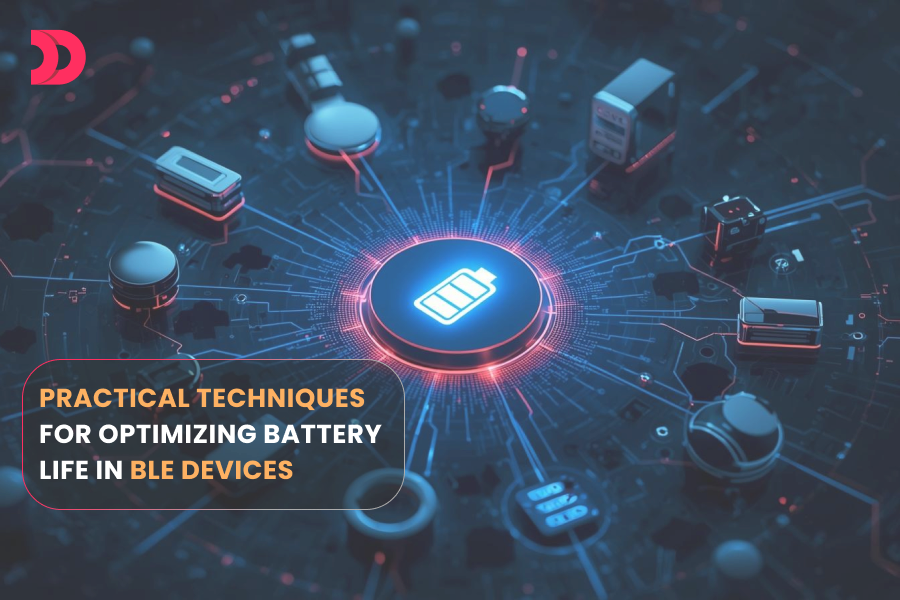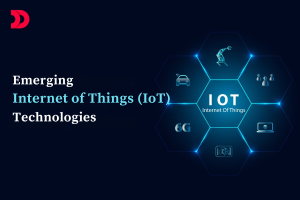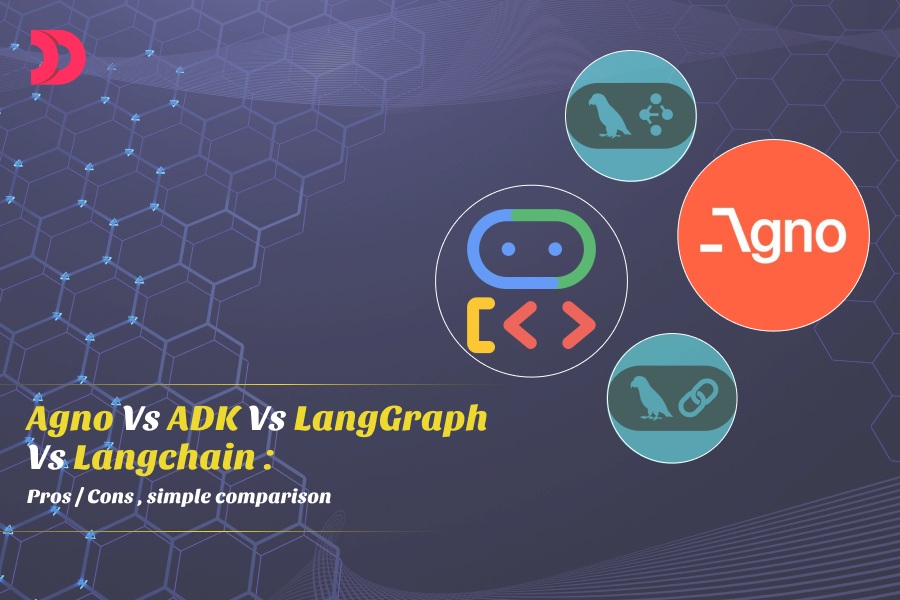What is the biggest nightmare of an embedded engineer? Well, it is the longevity of a Bluetooth Low Energy (BLE) device. When this device lasts weeks instead of days, it provides a significant edge over competitors by improving the user experience directly. It is, therefore, necessary for engineers to implement actionable techniques and best practices to optimize the battery life in BLE devices.
This blog talks about some practical techniques to extend the runtime of BLE device batteries without compromising on functionality or performance. We will also delve into hardware and other considerations to increase the battery life. Let’s start with the necessity of BLE technology in IoT connectivity.
Why BLE Dominates IoT Connectivity
Bluetooth Low Energy (BLE) dominates the Internet of Things ecosystem because of its superior efficiency and excellent support for smartphones and computers alike. BLE can also minimize power consumption by operating with a significantly low duty cycle, transmitting small bursts of data after waking up for microseconds. This characteristic makes BLE a preferred choice for battery-powered sensors, wearables, and other low-energy devices.
The main power challenge in low-energy devices lies in minimizing the high current draw of the radio’s active time. Whether the radio is transmitting or receiving, the current consumption spikes significantly, and therefore, it is necessary to optimize it to reduce the spikes and frequency of these spikes.
Out of two BLE parameters affecting this energy, the Advertising Interval determines how frequently a device broadcasts its presence to control the power spent directly. Another parameter, the Connection Interval, dictates how often the two devices wake up to exchange data packets. A longer Connection Interval can reduce the overall duty cycle dramatically by enabling low-energy devices in deep sleep for extended periods.
Six BLE Battery Optimization Techniques
Here are six actionable techniques to increase the battery life of your BLE device. These techniques will help you make your BLE battery highly efficient.
- Adjusting Connection Parameters
It involves setting the longest possible connection interval and using Slave Latency. This can maximize the device’s time to remain in a low-power deep sleep state.
- Reducing Data Transmission Frequency
It is useful for minimizing the time the power-hungry radio remains active. You can reduce data transmission frequency by buffering and aggregating data.
- Using Sleep and Low-power Modes
Here, the concept is to ensure that the microcontroller spends the maximum possible time in Deep Sleep or System Off Mode to save power.
- Firmware-Level Optimizations
This is a code-based optimization technique that involves writing the code to execute high-power tasks as soon as possible to reduce the time spent in the active radio state.
- Efficient Coding Practices.
Well-written code executes quickly to reduce the overall time the microcontroller draws power. It is better to avoid complex, power-intensive tasks to improve execution efficiency.
- Reducing Wake-up Events and Sensor Reads
Every wake-up incurs a current penalty, and therefore, it is essential to reduce the frequency of transitions from deep sleep to active mode for the BLE battery.
It is beneficial to consult a reputable BLE technology expert and IoT development services provider to learn more about these practical techniques and methods to implement them.
Hardware and Design Considerations
Effective BLE battery optimization needs hardware and design choices. It starts with the type of battery, from Li-Po, Alkaline, etc. All these types have different capacities and discharge profiles with current draw. Component selection comes next, in which you need to choose a BLE System-on-Chip (SoC) with the lowest possible current draw. It is better to check it in both active and deep sleep modes.
Furthermore, the antenna design and PCB layout need optimization to achieve the maximum link budget and minimize the impedance mismatch. Apart from these considerations, testing and validation are essential for optimizing battery life. Engineers use specialized power-profiling tools to measure the current consumption across the range of BLE devices accurately. This data-driven measurement approach ensures that the battery remains optimized for long life.
How to Measure and Compare Improvements in BLE Batteries
Engineers use high-resolution power profiling tools, including a Source Measure Unit (SMU) or a specialized power analyzer. These tools can measure and compare the current consumption of a BLE effectively. Usually, BLE devices have a wide range of current consumption spanning nanoamperes (nA) in the deep sleep state to tens of milliamperes (mA) during radio transmission. Here, the primary measurement output is the current consumption waveform over time, which shows the device’s exact power state.
You can calculate the average current consumption over a representative operational period. This will help you establish a baseline. Once this baseline is set, you can test any implemented optimization and measure a new average current. Engineers can calculate the battery life extension theoretically using a specific formula.
Concluding Remarks
Achieving long BLE battery life is an ultimate goal for engineers and enterprises. Hope this guide on optimization techniques and hardware considerations will help you achieve this objective. Finally, it is essential to measure and compare current consumption using advanced power profiling tools. It will make your BLE device battery last longer.
DevsTree is a leading IoT and digital transformation solutions provider. We offer the best-in-class services in BLE implementation and related domains. Contact us to learn more about our services that drive business growth through automation.
FAQ's
Frequently Asked Questions
You can extend battery life by maximizing the time the device spends in deep sleep, minimizing the duty cycle of the radio (reducing active time), and optimizing the data payload size.
The connection and the advertising intervals are the two most critical parameters affecting power consumption.
The ideal connection interval is the longest possible value that still meets the app’s data latency and user experience requirements. It typically ranges from a few hundred milliseconds up to several seconds.
 Dec 11, 2025
Dec 11, 2025 

 156 Views
156 Views













